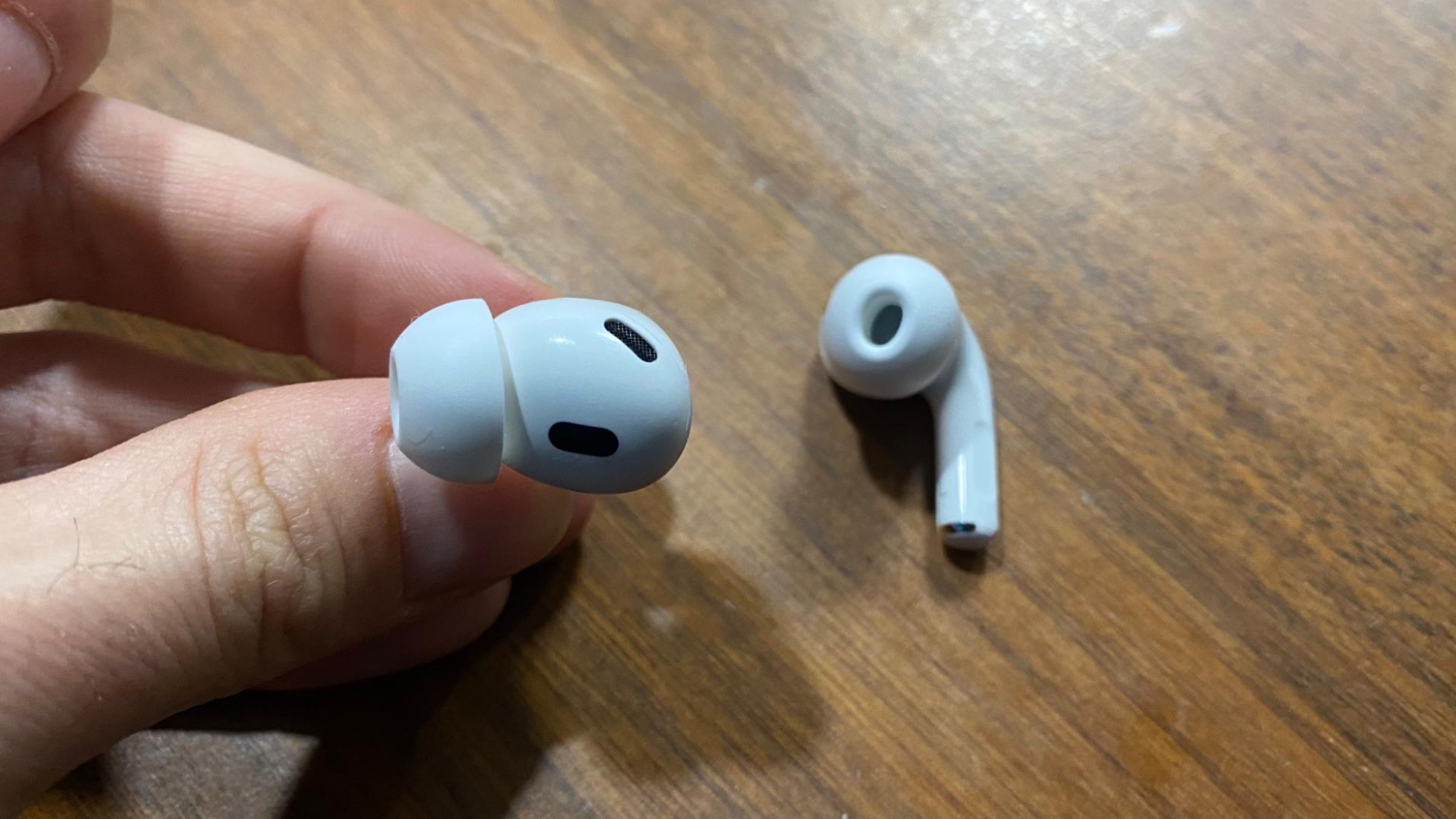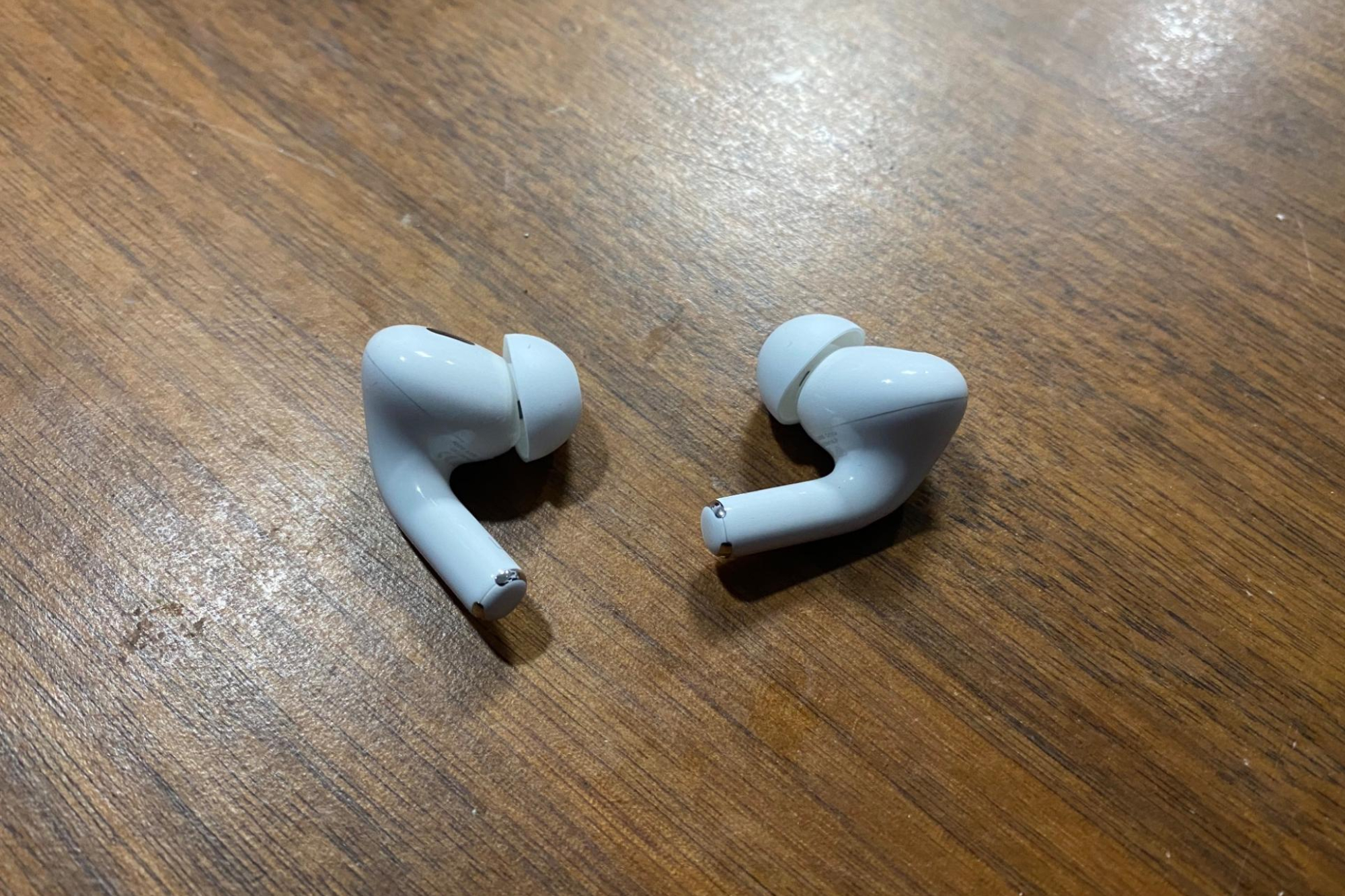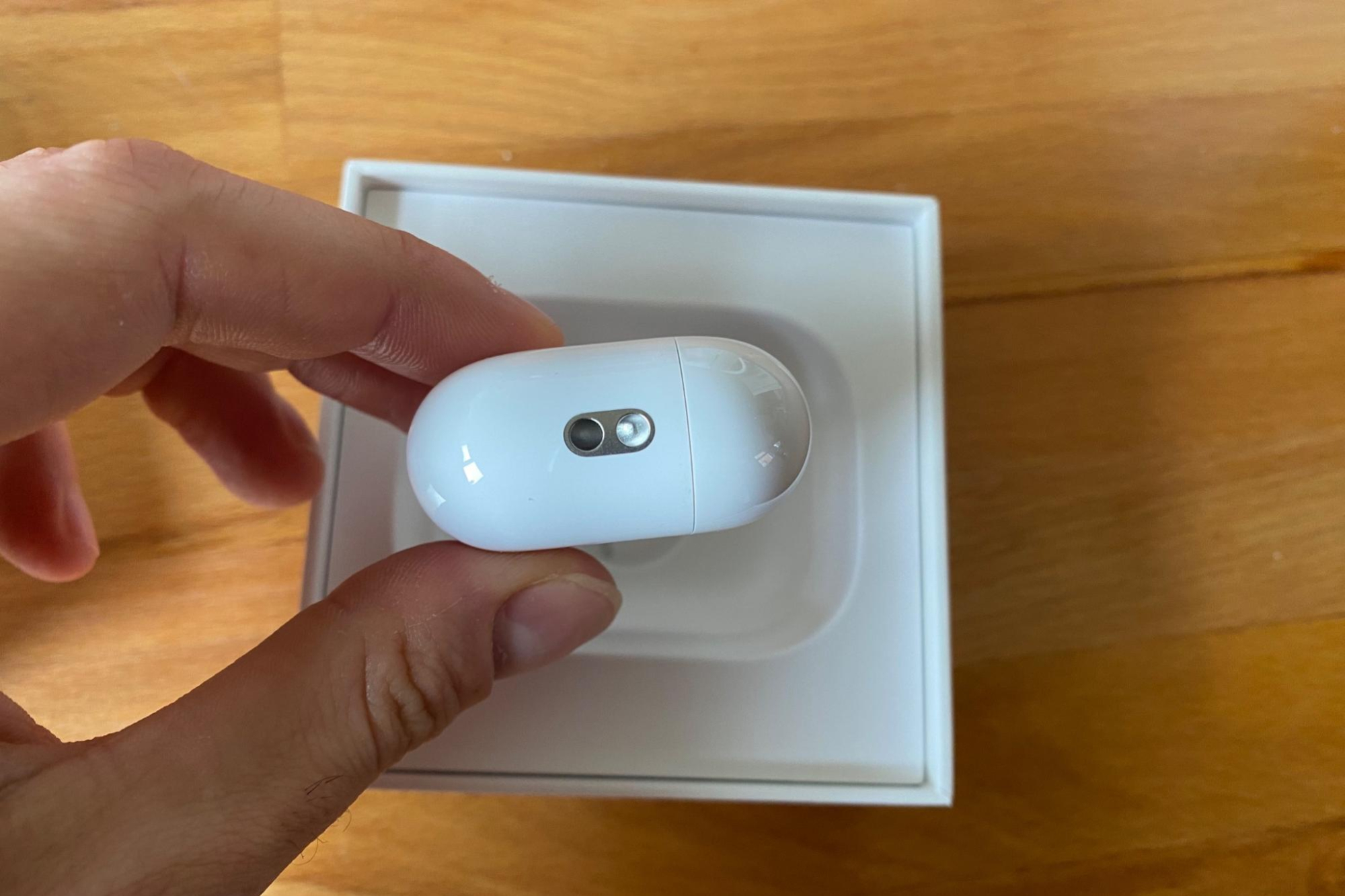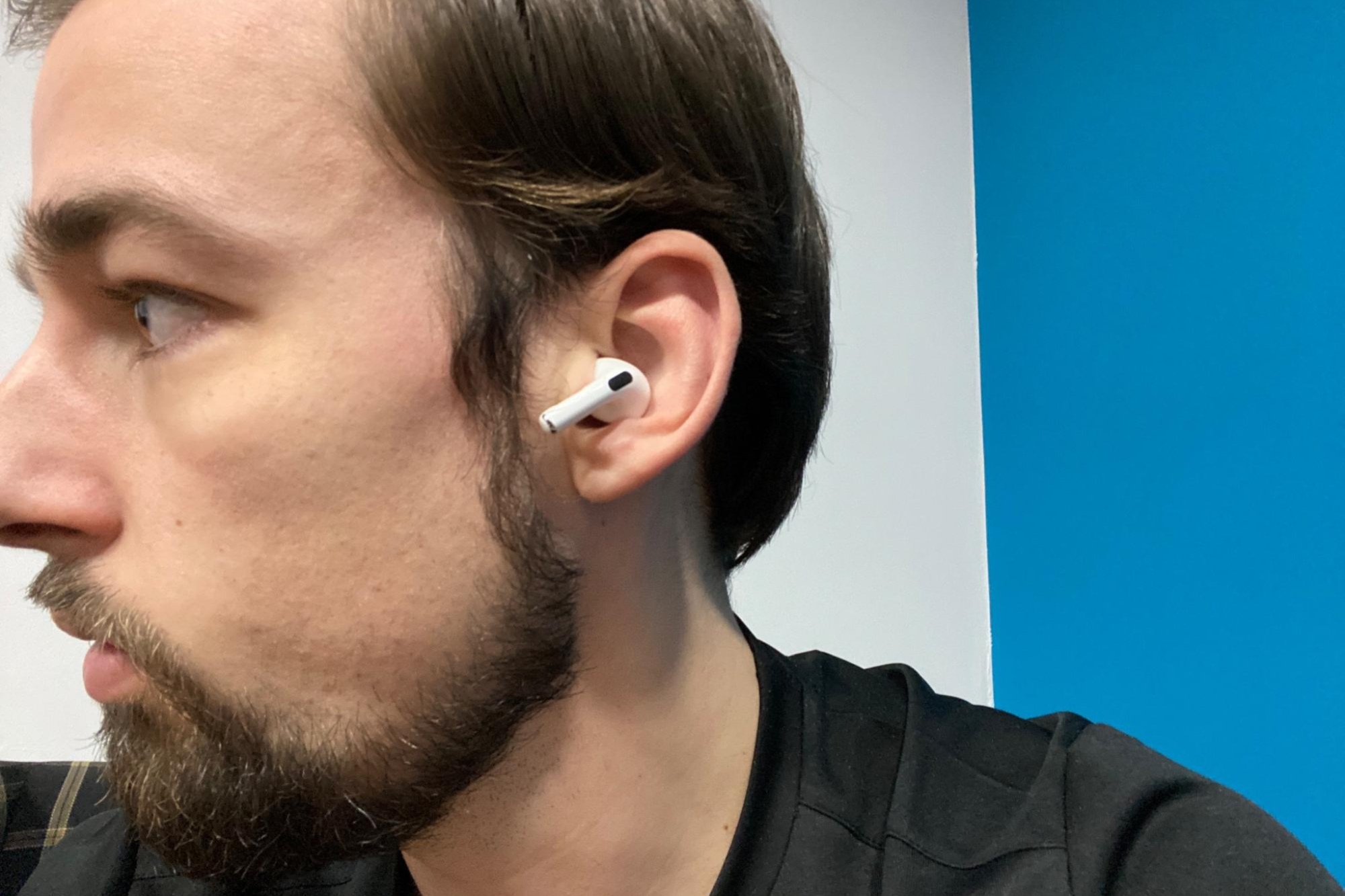
Headphones for cycling can be split into two quite distinct camps: earbuds and bone conduction. Typically, bone conduction headphones are better for enabling a greater awareness of your surroundings, as they don’t block up your ear canal and they allow ambient noise in.
On the other hand, bone conduction headphones tend to be quieter and deliver less of a rich sound than the earbud design - which generally represent the best option for riding indoors, as with noise cancellation they can really help block out the noise of an indoor trainer.
As such, the best headphones for cycling usually depends on what sort of riding you’re planning on doing - inside or outside? But with The AirPods Pro 2 adding in ‘Adaptive Transparency’, which is designed to allow ambient noise (such as from traffic) in, the line is becoming less clear cut. Here’s how we found them...
Apple AirPods Pro 2: construction

The Apple AirPods Pro 2 are essentially identical in form to the AirPods Pro; the whole product is made of the - now signature - white plastic material found on Apple headphones. But they are supposed to improve on a range of features, such as battery life and Active Noise Cancellation - as well as bringing in new features like volume adjustment touch control and Adaptive Transparency.

The case is 50g, 60.6mm wide, 21.7mm deep and 45.2mm tall and charges wirelessly or with a lightning cable. The earbuds are IPX4 sweat/water resistant and weigh 11g total for the pair (with the largest silicone earbuds mounted, four options are included). Controls on the earbuds consist of a tap (play, pause, skip), a hold (noise cancellation or transparency), or a stroke along the stem for volume.
The earbuds use the Apple H2 chip, whilst the case uses the U1 which allows the case to be found using the ‘Find My’ app. Inside the earbuds is an array of sensors including, Dual beamforming microphones, Inward-facing microphone, Skin-detecting sensor, Motion-detecting accelerometer, Speech-detecting accelerometer and Touch control.
Battery life is 6 hours on a single charge, 5.5 hours with head tracking spatial audio, and 4.5 hours of talk time. With the case to charge them up, this increases to 30 hours total time or 24 hours talk time. 5 minutes in the case gives 1 hour charge time.
The ride

Setting up the Apple AirPods Pro 2s, I used the larger earbud attachments which are supplied. They are a bit of a faff to remove, but the benefit here is that they are very unlikely to just fall off when you remove an earbud - something that has previously happened to me with other models.
I then set up notification announcements, so that when you’re riding you can keep up to date with notifications from apps or contacts of your choice. Noise cancellation or transparency can be activated by holding the stem of the earbuds, while the volume can be adjusted by swiping up or down the stem and playback can be paused, skipped, or backtracked with one, two or three clicks of the stem.
Straight away, going from the Gen 1 AirPods Pro, the sound quality of the AirPods Pro 2 is noticeably better. I’d be lying if I said this perception hadn’t gone away after a few minutes as I became used to them, but it was very good quality listening while training on the turbo. The biggest change though is the noise cancelling. I love not being able to hear anything other than my music or podcasts when on the turbo, and previously I could hear a little whir of the fan or of my gears, whereas with the new AirPods Pro the noise cancellation is truly exceptional and lets virtually no noise in!
The Spatial audio is another neat feature which felt like the music was playing all around me rather than just into my ears. The directional spatial audio, though, was a feature which I wasn’t particularly fussed with, as I always had my phone set up to the side of me so music was heavily playing in one ear and not the other.
The range of the AirPods was really very impressive. Stopping mid ride and climbing two floors up to the other side of the house, my music continued to play without a problem - which I really wasn’t expecting!
Transparency mode came in very useful when riding out on the road. I normally just ride with one headphone in (the left one) so as to allow traffic noise in and be able to hear cars coming up from behind. However, for the sake of testing, I used both AirPods and put transparency mode on.
I was quite surprised that, although very little wind noise came into the headphones, noise from vehicles approaching was almost enhanced - almost better than without headphones! The lack of wind noise may also be beneficial long term, as there have been studies on the damage that extended periods of high oscillation wind noise can have on hearing long term.
Charging was nice and easy with the Apple AirPod Pro 2s. On the odd occasion that I had forgotten to charge the case, it got a good boost of charge in just five minutes; after about 10 minutes this resulted in the headphones being charged enough for a good hour of listening time. I haven’t got a wireless charger at the moment, but I did like with the old AirPods that I could just drop them onto a wireless charging pad, come back a bit later and they’d be charged. The addition of MagSafe charging just means you are less likely to knock the case onto the ground as I have done with the old ones more times than I’d like to admit.
Cable charging is also very easy as if you have a Lightning cable lying around it will charge on that. The USB-C to Lightning cable included means you can do fast charging but only if you have a fast charging socket (not supplied). Apple says they have stopped supplying the plugs to help reduce environmental waste. I can understand this a bit, as I still have several old lightning chargers and plugs, but with fast charging being a more recent occurrence, and pretty much all of Apple’s lightning charged devices now not coming with a fast charge plug, many Apple users won’t have one lying about, and will instead need to purchase one at a significant price.
Phone calls were another area where the Pro 2s performed well. When going along at more than 35kph there was a bit of wind noise for whoever was on the other end of the phone, but below that it was possible to have coherent conversations with someone. Personally I try to avoid work calls when I’m out on the bike, but it’s useful in the event of an emergency and you can continue to ride with both hands on the bars and eyes on the road. Transparency mode means you can still be aware of traffic while on the phone too.
The voice recognition was also very good. I’m a sucker for remembering something I need to do when out on the bike, so being able to say “Hey Siri, remind me to put the bins out when I get home” is very useful, otherwise I will forget, again. However, features such as Siri and Notification Announcements are features that are exclusive to Apple, so Android users will miss out on some of these features. They will still work for music and phone calls as well as the noise cancellation, but many of the great features are limited to Apple devices only which is something to consider before buying.
Now, I appreciate that there will be people who say that you should never cycle with headphones. And, in some ways, I would agree. Riding with both earbuds in with noise cancellation would be foolish, just as driving around with the stereo on full blast is foolish. But riding with one earbud in means you can still hear well from the right side, and with transparency mode on you can hear well on the left side too.
There is also the fact that for those travelling at speeds of 30kph or so, the wind noise is loud enough that some research has been done into the effect of wind noise when cycling on hearing. What it comes down to is that you should make sure you are able to take note of surroundings, visually and audibly, the same as any road user should. If riding with headphones impairs your hearing, don’t do it. If it doesn’t, then I see no issue with doing so. Riding with a single earbud in the left ear (for countries where you drive on the left) shouldn’t impair hearing or safety.
Value and conclusion
When it comes to price, the Apple AirPods Pro 2 are not cheap at $249 / £249. However, when compared to other noise cancelling in-ear buds, the price is not bad. Bose and Samsung offerings come in at similar prices ($299.99 / £279.95 & $229.00 / £219.00 respectively), while Sony and Beats offer a slightly cheaper price point at $279.99 / £179.99 and $219.99 / £199.99 respectively. All of these headphones have pretty similar specs in terms of battery life, charging cases, noise cancelling and sound quality that probably only real audiophiles will be able to differentiate between.
Where the AirPods do win out, is when paired with an Apple device as many of the features are exclusive to Apple. The Beats Fit Pro however does also have many of these features (after being purchased by Apple) so if you want a slightly cheaper alternative, they may be your best option. They do, however, miss the transparency audio mode of the AirPods which means that you can ride with earbuds in and still be able to hear road traffic very easily, making them ideal for those who ride with headphones.
The Shokz OpenRun bone conduction headphones ($129.95/£129.95) are a cheaper option that we have previously reviewed, and do bypass the issue of in-ear headphones of ear shapes and appropriate sized buds. However, being bone conducting, the sound is not quite as crisp or clear.
The AirPods Pro 2 are a genuinely great pair of earbuds. The sound quality is excellent for when Zwifting or for riding out on the road. The noise cancelling means you can block out the sound from the turbo or fan when indoor training, whilst the transparency mode and having just one earbud in at a time means you can listen to music or podcasts out on the road without compromising hearing at all.
The battery life is more than enough for most rides, and the case charges up the earbuds very quickly. Sweat resistance is great and the fit options work really well for me. I would be hard pressed to find a better option. However for those who are not an iPhone user, there are potentially better value options with just as many useful features







